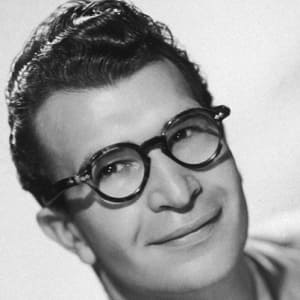
Nelson Rockefeller
The son of John D. Rockefeller Jr., Nelson Rockefeller served four terms as governor of New York. He was later appointed vice president under President Gerald Ford.
Synopsis
Born in Maine on July 8, 1908, Nelson Rockefeller was a grandson of John D. Rockefeller Sr., founder of Standard Oil, and the son of John D. Rockefeller Jr. After working in business and government, in 1958, Nelson Rockefeller was elected governor of New York, serving four terms. Later, in 1974, he was appointed vice president of the United States by President Gerald Ford. An avid art collector and patron, Nelson Rockefeller died in New York City in 1979. A wing of New York's Metropolitan Museum of Art is named in his honor.
Early Life
Considering his pedigree, it's no surprise Nelson Aldrich Rockefeller rose to become a political powerhouse. His maternal grandfather, Nelson Aldrich, was an influential senator from Rhode Island; his paternal grandfather, John D. Rockefeller Sr., founded Standard Oil, becoming the wealthiest man in the United States during the 19th century—and continuing to hold that status for decades thereafter.
Born on July 8, 1908, in Bar Harbor, Maine, Nelson Rockefeller was the third of six children born to John D. Rockefeller Jr. and his first wife, Abby Aldrich Rockefeller. Headstrong and full of energy, Nelson had a rocky relationship with his father, who tried to bestow on his children the values of modesty and restraint—qualities deemed to be of little use by the ambitious young Nelson. By many accounts, Nelson Rockefeller was the leader among his siblings as well as his mother's favorite. Even as a child, he spoke of becoming president one day.
Nelson Rockefeller earned a Bachelor of Arts degree in economics at Dartmouth College in 1930, and, upon graduation, married Mary Todhunter Clark. Following a nine-month honeymoon, he worked at the London and Paris branches of Chase National Bank—a business owned in large part by the Rockefeller family. In 1931, despite the country's entrance into the throes of Great Depression, ground had broken on Rockefeller Center, which had been initiated by John D. Rockefeller Jr. in the late 1920s and was the largest private construction project in New York City at the time. Joining the staff overseeing the Center development, Nelson quickly rose through the ranks by helping shepherd the ambitious project through a time of economic turmoil.
'Man at the Crossroads' Controversy
By 1938, at 30 years old, Nelson Rockefeller was named president of Rockefeller Center, Inc. His tenure, however, was not without controversy: In 1934, he famously ordered the demolition of a mural by Mexican artist Diego Rivera, entitled "Man at the Crossroads," which portrayed Soviet leader Vladmir Lenin. While he had commissioned Rivera to complete a mural in the RCA building, located at Rockefeller Center, Nelson (along with several others who managed to view the work before it was publicly unveiled) disliked Rivera's insertion of Lenin—an addition that was neither approved nor known about in advance. The artist had reportedly included the Soviet leader in his mural in an attempt to portray the turbulent political atmosphere at the time, which was largely defined by conflicting capitalist and socialist ideologies and escalating fears regarding the growth of the Communist Party.
An ensuing publish backlash against the Rockefellers—who, after long proclaiming a deep dedication to the arts, now looked both hypocritical and tyrannical—reportedly humiliated Nelson's mother, Abby Rockefeller, who, in response to the negative publicity, stated that she had never wanted the mural to be destroyed. While Nelson Rockefeller is widely credited with demolishing Rivera's mural, John D. Rockefeller Jr. later attempted to explain the incident, stating, "The picture was obscene and, in the judgment of Rockefeller Center, an offense to good taste. It was for this reason primarily that Rockefeller Center decided to destroy it."
Political Career Beginnings
During his time in New York, Rockefeller's interest in government began to shine through. In 1933, he served as a member of the Westchester County (New York) Board of Health. He went on to enter national and international politics in 1940, when he was appointed coordinator of the Office of Inter-American Affairs by President Franklin D. Roosevelt.
Nelson would later receive presidential appointments by Harry S. Truman, Dwight D. Eisenhower and Richard Nixon. His impressive career in public service would ultimately help to integrate the Rockefeller name with the American political arena.
New York Governor
In 1958, Nelson Rockefeller successfully campaigned for the governorship of New York—a victory that made him an instant contender for the Republican presidential nomination in 1960. Although Rockefeller lost the nomination to the more conservative Richard Nixon, he would to try to win the party's nomination again in 1964. That bid also met with failure, as his campaign became mired in controversy surrounding his divorce from wife Mary Todhunter Clark Rockefeller and subsequent marriage to the much younger Margaretta "Happy" Murphy. (With his first wife, Nelson Rockefeller had three sons, Rodman, Steve and Michael, and two daughters, Ann and Mary; with second wife Margaretta Murphy, he had two sons, Nelson Jr. and Mark.)
Although he didn't find success as a presidential candidate (he ran unsuccessfully again in 1968), Nelson Rockefeller won high praise for his work as governor of New York State, serving four consecutive terms in that position. A progressive Republican, he focused on education, welfare, housing, transportation and the arts.
Vice Presidency and Final Years
In 1974, just one year after resigning as governor, Nelson Rockefeller was nominated for the U.S. vice presidency by President Gerald Ford. He subsequently served as vice president, under Ford, from 1974 to '77.
Nelson A. Rockefeller died of a heart attack in New York City on January 26, 1979.




